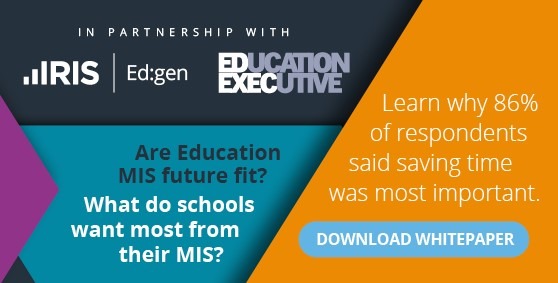
There is more to MIS than data management and registration. MIS offer parent communication, timetabling, finance management and more. Therefore, software developers need to be conscious of the possibilities of one packaging covering all the information demands within the complex organisation that is a school. But why is it so essential that MIS software is comprehensive and integrated for the future?
Funding
Schools’ resourcing is stretched. On average, schools spend three-quarters of their budget on staffing costs. With little left for other essentials such as administration staff, resources, facilities management, and technology, whatever is brought in needs to address multiple pain points. For schools, purchasing technology is driven by the need for time efficiencies. For providers of educational technology there is an imperative for products to deliver on multiple fronts, to aid professionals in a complex environment.
School funding is second only to health, with ‘£90bn in 2017–18 in today’s prices or about 4.3% of national income’ allocated to schools. However, in 2019-20 schools were asked to make savings of £3bn, according to the National Audit office. Therefore, efficiency is going to be critical to the procurement of whole school systems. The demand for value for money in the long term is going to be the driver for school leaders and business managers to a specific product.
Stakeholder demands
While financial limitations are significant, the time needed to deliver required data and information to stakeholders is also going to drive purchase decisions. In January 2021, schools were required to submit the School Census Spring 2021 attendance data. The data provided to the government was required to help assess the impact of the pandemic on the education of young people.
What does this reveal about the needs of future-fit MIS? First, data collection is imperative to the central government. Second, without the right MIS software, schools will find legislative demands for data reporting challenging, especially in times of uncertainty. As the Young Foundation reported, in their report Commissioning Futures: a guide for schools (2018), “working with external providers, particularly those offering innovative services, can help schools address the specific challenges for their school.” Consequently, understanding these specific challenges and evolving features and functions that genuinely supports schools and MATs will distinguish the best MIS from the others.
Where do we go from here?
The innovations offered in business could provide some context for what school MIS software could and should do in the future. Lessons can be taken from the private sector into the educational setting. More attention needs to be given to how these potential features and functions of MIS might support the needs of schools.
School leaders and business managers are clear on what they demand from a future fit MIS system, an MIS that deliver value for money, increased productivity, and streamlined communication and collaboration – this in turn offers effectiveness that will help schools into the future?
Want to learn more from our research into the future-fitness of MIS in schools?




Be the first to comment